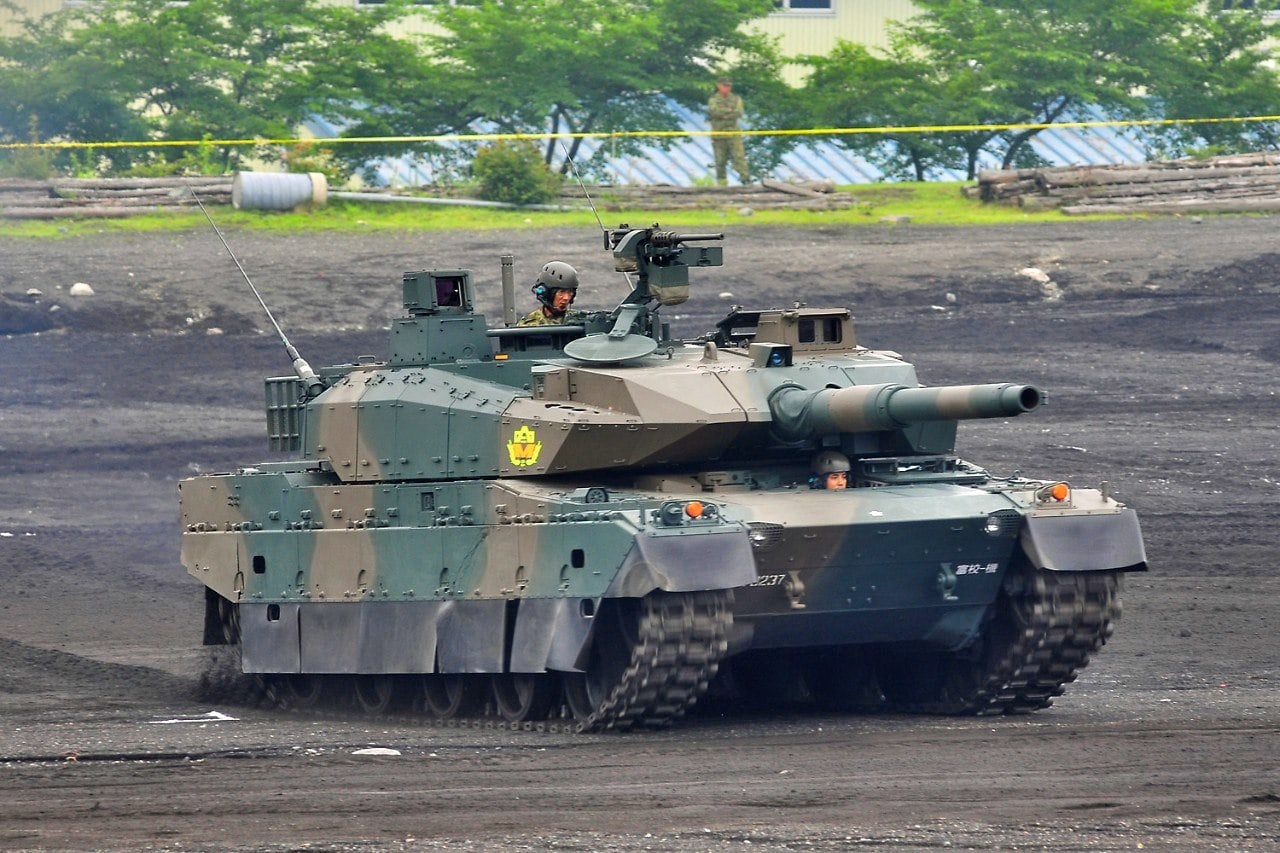The Type 10 Main Battle Tank (MBT), also known as the Hitomaru-shiki sensha, represents a significant leap in Japan’s armored warfare capabilities.
Developed by Mitsubishi Heavy Industries for the Japan Ground Self-Defense Force (JGSDF), this fourth-generation tank is a testament to Japan’s commitment to maintaining a modern and effective military force.
Since its introduction in 2012, the Type 10 has been lauded for its advanced technology, superior mobility, and robust firepower.
Development of the Type 10
The development of the Type 10 began in the 1990s under the project name TK-X (MBT-X). The primary goal was to create a tank that could replace the aging Type 74 and supplement the Type 90 tanks in the JGSDF’s arsenal.
The need for a new tank was driven by the evolving nature of modern warfare, which demanded enhanced command and control capabilities, better protection against anti-tank weapons, and improved mobility.
One of the key design priorities for the Type 10 was incorporating the C4I (Command, Control, Communication, Computing, and Intelligence) system. This system allows the tank to operate seamlessly within a network-centric battlefield, providing real-time data sharing and enhanced situational awareness.
The emphasis on C4I capabilities was a response to the limitations of upgrading the older Type 74 and Type 90 tanks, which lacked the internal space to accommodate such advanced systems.
The Type 10 Packs a Punch
The Type 10 is equipped with a 120 mm smoothbore cannon developed by Japan Steel Works. This cannon, which can fire both standard NATO 120 mm rounds and the unique Type 10 Armor-Piercing Fin-Stabilized Discarding-Sabot (APFSDS) rounds, is paired with an automatic loader, reducing the crew requirement to three members: a commander, a gunner, and a driver.
The auto-loading mechanism is housed in the rear section of the turret, giving the tank its distinctive appearance. In addition to its main gun, the Type 10 is armed with a Type 90 12.7 mm machine gun and a Type 74 7.62 mm machine gun, providing ample secondary firepower for engaging infantry and light vehicles.
The Type 10’s armor is a modular ceramic composite, which offers a high level of protection while allowing for flexibility in weight and configuration. The tank’s armor can be adjusted based on the mission profile, with removable sections that can be added or removed as needed. This modular approach enhances the tank’s survivability and makes it easier to repair and upgrade.
The tank’s design also includes advanced defensive systems, such as a laser warning system and smoke grenade launchers, which help to protect it from enemy detection and targeting. The commander’s panoramic sight, mounted higher than in previous models, provides a wider field of view, further enhancing the tank’s defensive capabilities.
One of the standout features of the Type 10 is its exceptional mobility. The tank is powered by a 1,200 horsepower V8 diesel engine, which, combined with its relatively lightweight (40 to 48 tons depending on configuration), gives it a power-to-weight ratio of 27 horsepower per ton.
This allows the Type 10 to achieve speeds of up to 70 km/h both forward and backward, making it one of the fastest tanks in the world.
The Type 10 also features a hydropneumatics suspension system, which provides excellent off-road performance and allows the tank to adjust its ground clearance for different terrains.
This system, combined with the tank’s advanced transmission, ensures that the Type 10 can operate effectively in a variety of environments, from urban settings to rugged landscapes.
The Type 10’s Flaws and its Future Outlook
Since its introduction, the Type 10 has been deployed primarily within Japan, a key component of the JGSDF’s armored forces. Its advanced capabilities make it well-suited for both defensive and offensive operations, and it has been used extensively in training exercises and military demonstrations.
While it possesses advanced electronics for the situation, it is somewhat lacking in armor protection compared to some of its Western compatriots.
In addition, production on the Type 10 seems incredibly slow, with less than a hundred Type 10s built so far. This significantly limits its potential battlefield impacts in the event of a large-scale conflict. If the Type 10 is expected to perform well against adversaries, especially China, it must be built in larger numbers.
Despite its smaller issues, the Type 10 is expected to remain a cornerstone of Japan’s armored forces for many years to come. Its modular design and advanced technology make it highly adaptable to future upgrades and modifications, ensuring that it can continue to meet the evolving demands of modern warfare.
The Type 10 Main Battle Tank is a remarkable achievement in military engineering. Its combination of advanced technology, superior mobility, and robust firepower make it one of the most capable tanks in the world today. As Japan continues to enhance its defense capabilities, the Type 10 will undoubtedly play a crucial role in maintaining the country’s security and military readiness.
About the Author: Isaac Seitz
Isaac Seitz, a 19FortyFive Defense Columnist, graduated from Patrick Henry College’s Strategic Intelligence and National Security program. He has also studied Russian at Middlebury Language Schools and has worked as an intelligence Analyst in the private sector.

